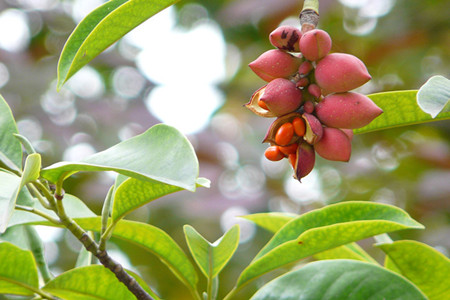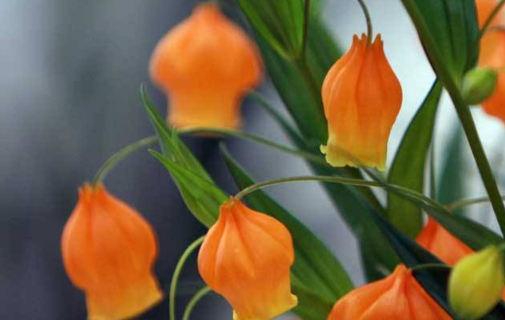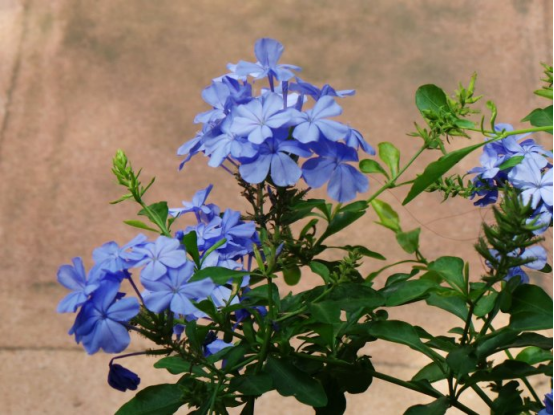The breeding method of Michelia mollissima
Michelia mollissima is a shrub family, so the general method of reproduction is to choose the method of sowing, so you should be prepared before breeding.
1. Soil selection
Michelia likes a warm and humid environment, so you should choose sandy soil that is deep and fertile, with plenty of water and good drainage. Before reproduction, base fertilizer should be applied to the soil to increase the effort of the land, and the solution should be used for soil disinfection and pest control, which is more conducive to the development and survival of new seedlings.
2. Seed selection
Michelia mollissima is more convenient for seed selection, because it can be sowed as it is picked, but if we want to improve the survival rate of reproduction, we must choose excellent Michelia mollissima seeds, sow and maintain it carefully in order to improve the survival rate and live a good plant.
3. Sowing season
Spring and March is a good time to sow seeds. Soak the seeds in 0.5% potassium permanganate solution for 2 hours before sowing, then put them in warm water for a day and wait for sprouting.
After the seeds are absorbed and expanded, the seeds are taken out and dried, and then the seeds can be mixed with calcium magnesium phosphorus fertilizer to increase the nutrients of the plant.

4. Sowing method
When sowing, bury the seed shallowly in the soil about 1cm, and then cover the surface of the seed with coke ash, about 1cm. Finally, the seeds can be completely covered with loess.
Generally, it is necessary to cover the grass after sowing, which helps to keep the soil loose, ensure a certain amount of humidity, and improve the success rate of seed germination. After sowing for about a month, the seeds can basically break the soil and germinate. At this time, you can remove the "coat" of the wolf grass.
After sowing, we should also pay attention to some pest control of Michelia mollissima in the mountains.
Culture methods and points for attention of Michelia mollissima
Latin name Michelia maudiaeDunn
Don't call it glossy white orchid, Mrs. Mo Michelia.
The plant kingdom.
Angiospermae, angiosperm phylum
Dicotyledonous class Dicotyledoneae
Primitive perianth subclass Archichlamydeae
Ranales of Ranuncula
Komulanke Magnoliaceae
Trib of Magnolia. Magnolieae
Genus Michelia
Kind of Michelia mollissima
Distributed in southern Zhejiang, Fujian, Hunan, Guangdong, Guangxi, Guizhou.
Michelia mandshanica (scientific name Michelia maudiae Dunn), also known as Guangye Bailan, Mo Madame Magnolia. Evergreen trees of the genus Michelia of Magnoliaceae. Species endemic to China. Fast growth, good material, strong adaptability, not withered in winter, early spring white flowers full of trees, large flowers, fragrant, red seeds, oblique oval. The tree is beautiful and has high ornamental and economic value. Mainly distributed in Zhejiang, Fujian, Hunan, Guangdong, Guangxi, Guizhou and other places.
1. Morphological characteristics.
Evergreen trees, up to 20 m tall, glabrous; bark thin, grayish gray or grayish brown smooth indehiscent; buds, twigs, leaves, bracts are albino. Leaves alternate, leathery dark green, dorsal light green, oblong-elliptic, rarely ovate-elliptic, 7-18 cm long, 3.5-8.5 cm wide, apex abruptly short acuminate or shortly acuminate and tip obtuse, base cuneate, broadly cuneate or subrounded-obtuse, dark green above, glossy, gray-green below, glaucous, lateral veins 7-12 on each side, straight or slightly curved, forked to near leaf margin, mesh dense. Petiole 1-3 cm long, without stipule scars.
Pedicel green with 3 annular bracts shedding scars, flame bracts light brown, thinly leathery, ca. 3 cm long; flowers fragrant, tepals 9, pure white, base slightly reddish, outer whorl Obovate, 5-7 cm long, 3.5-4 cm wide, tip shortly acute, base with claws ca. 1 cm long, inner two whorls tapering; nearly spoon-shaped, tip; stamens long.
1.5-2.2 cm, connective protruding 1-2 mm long tip, filaments broadly flat, lavender, ca. 4 mm; pistils 1.5-1.8 cm long; pistil stalks 5-8 mm long. Carpels green, narrowly ovoid, style 5-6 mm long. Aggregate fruit 7-15 cm long, follicles oblong, Obovate, ovoid, tip obtuse or with a short tip. Seeds red, obliquely ovoid, ca. 1 cm long, ca. 5 mm wide, slightly flattened.
The flowering period is from February to March and the fruiting period is from September to October.
2. Growth and distribution
Like warm, humid environment, have a certain degree of cold resistance. Like light, more tolerant to shade when young. The natural regeneration ability is strong, the growth is fast, the adaptability is wide. It is resistant to dry heat and strong resistance to sulfur dioxide. Acid sandy soil with a deep, loose, fertile and moist layer. The root system is developed and the sprouting ability is strong.
Produced in southern Zhejiang, Fujian, Hunan, Guangdong (northern, central and southern coastal islands), Guangxi, Guizhou.
3. Main value
The value of the garden is bright green leaves and pure white flowers, which are ornamental trees and greening trees on four sides of the garden.
Economic value wood with straight texture, fine structure and easy processing, for furniture, plate, drawing plate, cabinetwork. It is a kind of fast-growing evergreen broad-leaved timber species with good wood quality, strong adaptability, easy reproduction and less diseases and insect pests. Aromatic oil can be extracted.
Medical value flower: Xin, Wen. Dispelling wind and cold, dredging nose orifices, promoting qi and relieving pain. Root and flower: clearing heat and detoxification, removing qi and turbid, relieving cough.
4. Cultivation techniques
Direct sowing seeds can be sowed with picking or stored in wet sand until late February to early March in early spring. In order to improve the germination rate of seeds and reduce the trouble of seed sand storage, the seeds can be sown directly after being shaded and dried. Before sowing, soak the seeds with 0.5% potassium permanganate solution for 2 hours, put them into warm water to promote germination for 24 hours, wait for the seeds to absorb water and expand, remove the seeds and place them in the bamboo basket to dry. The seeds were mixed with calcium magnesium phosphate fertilizer after drying.
The nursery should choose sandy loam with good drainage and irrigation conditions, moderate sunlight, deep soil layer, fertile soil, sufficient water source and good drainage.
The nursery should be turned deeply before sowing, and the soil preparation should be meticulous, so as to achieve "three ploughing and three harrowing". At the same time, 70% thiophanate 5kg was used for soil disinfection and 90% trichlorfon 2kg was applied to kill soil pests. After soil disinfection, the bed was built with a height of 25cm, a bed width of 110-120cm and a walking ditch width of 30-35cm. The bed is slightly shaped with a turtle back, and a good drainage ditch is opened around so that the rain stops the ditch without stagnant water. Using strip sowing, strip spacing 25cm, sowing rate 8-10kg/667m2. The sowing ditch was 1.5-2cm deep. After sowing, the seeds were covered with coke ash, the thickness was about 1cm, and then the yellow soil was covered with 1-2cm. In order to keep the seedling soil loose and moist, and conducive to seed germination, it is necessary to cover the grass, and its thickness is not seen in the soil. After sowing, it is necessary to strengthen the field management of the nursery, in addition to spreading poisonous rats on the walkway and around, timely do a good job of clearing ditches and draining in rainy days and watering and moisturizing in dry weather.
The method of sowing and propagation of Michelia mollissima
Soil selection
Michelia mollissima is a shallow-rooted tree species, so we should choose sandy soil with deep and fertile layer, adequate water supply and good drainage.
The application of base fertilizer in the soil and the disinfection and control of soil with chemical solution can effectively reduce the incidence of underground pests.
Selection of species
The seeds of Michelia mollissima can be sown at any time, and it is easy to reproduce. But we still need to sow seeds seriously if we want to get a good adult Michelia mollissima.
Spring and March is a good time to sow seeds. The seeds can be soaked in 0.5% potassium permanganate solution for 2 hours before sowing, and then placed in warm water for 24 hours. This step is to promote germination.
After the seeds are absorbed and expanded, the seeds are taken out and dried, and then the seeds can be mixed with calcium magnesium phosphorus fertilizer to increase the nutrients of the plant.
Sowing period
When sowing, bury the seeds in the soil about 1mm, then cover the surface of the seeds with coke ash, about 1cm thick. Then cover the seeds completely with loess.
After sowing, it is necessary to cover the grass, which is conducive to keeping the soil loose, ensuring a certain amount of humidity, and is conducive to the successful germination of seeds.
Later maintenance and management
About a month after sowing, the seeds can basically break the soil and germinate. At this time, you can remove the "coat" of the wolf grass.
The seedlings of Michelia mollissima are fragile and vulnerable to various insect pests. Therefore, at this stage, we should pay attention to the prevention and control of diseases and insect pests. For specific prevention and control methods, you can refer to our previous articles!
- Prev

How to raise lilies with palace lanterns
The main results are as follows: 1. The soil with loose, fertile and good drainage is selected, and the soil with low acidity is improved by quicklime, which can not only improve the soil, but also kill some soil germs and underground pests. If the alkaline soil is improved with phosphoric acid and peat, the dosage depends on the specific situation.
- Next

Propagation methods of Lanhuadan
1. Advantages of sowing and reproduction: the sowing and reproduction of Lanhuadan is easy, and it can blossom in the same year after successful sowing. Sowing conditions: when sowing and breeding, Lanhuadan should choose suitable sowing utensils and suitable soil, requiring fresh soil free of insect eggs and good drainage. Peat, vermiculite or sandy soil can be used.
Related
- Fuxing push coffee new agricultural production and marketing class: lack of small-scale processing plants
- Jujube rice field leisure farm deep ploughing Yilan for five years to create a space for organic food and play
- Nongyu Farm-A trial of organic papaya for brave women with advanced technology
- Four points for attention in the prevention and control of diseases and insect pests of edible fungi
- How to add nutrient solution to Edible Fungi
- Is there any good way to control edible fungus mites?
- Open Inoculation Technology of Edible Fungi
- Is there any clever way to use fertilizer for edible fungus in winter?
- What agents are used to kill the pathogens of edible fungi in the mushroom shed?
- Rapid drying of Edible Fungi

